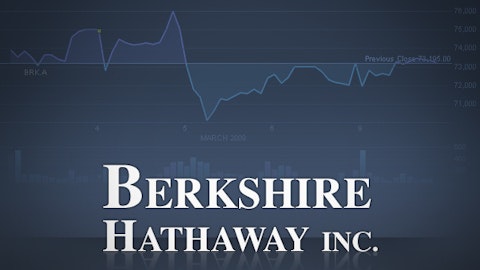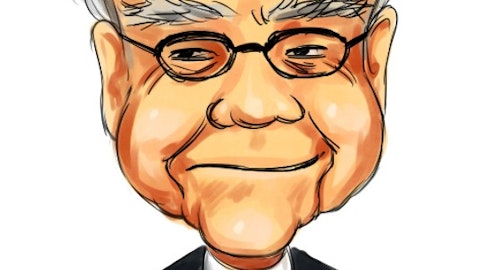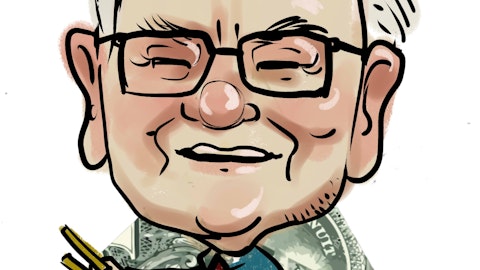
Shifting landscape
A new study came out on Sunday in the journal Nature Climate Change, depicting the shift over the last half-century of U.S. agricultural production to the north and west. The study, “Effects of climate change on US grain transport,” predicts acceleration in that trend as climate change continues to alter the regions where crops thrive. The authors expect that these changes will add strain to U.S. infrastructure, and that trains will displace barges as the primary mode of agricultural transportation. The study says rail transport must grow “from 8-14 percent due to the more northward shifts in crop mix and a reduction in proximity to the river system.”
In January of this year, the United Soybean Board published a report examining the U.S. railway system and its capacity to support future growth. “Maintaining a Track Record of Success” calls for rail infrastructure expansion to accommodate agricultural sector growth. Here, too, the report anticipates a gradual shift from trucking to rail, especially as rail is cheaper than trucking while producing far smaller quantities of greenhouse gases. The report notes that “the shifting economics of the coal and oil industry will all force additional adjustments in rail investment strategies.”
Last December, the Association of American Railroads published its “Moving Crude Petroleum by Rail” report. The authors explain:
Much of the recent increases in crude oil output has moved by rail from production areas, such as North Dakota, that are not adequately served by pipelines. As recently as 2008, U.S. Class I railroads originated just 9,500 carloads of crude oil. By 2011, this had jumped to 66,000 carloads, and in 2012 will exceed 200,000.
As long as we’re going down that track, we can hardly ignore the Keystone XL elephant in the room. In the rabid battle over whether Keystone gets built, one thing is clear: While Nero fiddles, Rome is laying rail. Many posit that if the pipeline fails to win Obama’s endorsement, the alternative will be to transport crude by rail. But at this point, with backlogs a mile deep and multiple new demand drivers, crude by rail is happening regardless.
Sarbjit Nahal, head of Thematic Investing Strategy at Bank of America Merrill Lynch, recently published an anvil-heavy tome guiding equity investors through strategies to capture the opportunities of the move toward energy efficiency. The report analyzes the energy-efficiency theme by economic sector, with transport far and away the most important — it already consumes half the world’s liquid fuel and is projected to guzzle 60% more by 2035. Given the limited scope for substitution out of oil in the next five years, Nahal predicts that one of the biggest beneficiaries will be rail.
Come on, ride that train…
So who sees an opportunity here? Let’s take a look at who’s where to get a better sense.

Source: U.S. Department of Transportation Federal Railroad Administration.
CSX Corporation (NYSE:CSX) and Kansas City Southern (NYSE:KSU) are all over the eastern seaboard, and they’re both getting skin in the game. CSX Corporation (NYSE:CSX) plans to spend $2.3 billion on wide-ranging expansion activities such as raising highway bridges, enlarging mountain tunnels, and clearing obstacles to make room for double-decker containers from the Midwest to the mid-Atlantic ports.
Kansas City Southern (NYSE:KSU) has plans for $515 million in capital expenditures for 2013. CEO David Starling noted the massive growth projections for rail in the next 30 years in the company’s fourth-quarter 2012 earnings call, concluding, “I don’t know when capacity becomes a bad investment.” The company saw its greatest growth in 2012 from crude oil, at 350% for the full year, albeit from a very low base.
If we shoot on over to the other side of the country, we see wide-open spaces threaded with BNSF — part of Warren Buffett’s Berkshire Hathaway Inc. (NYSE:BRK.B) empire — and Union Pacific Corporation (NYSE:UNP). If agriculture is moving north and west, it sure looks like there’s room for the incumbents to capture some value.
BNSF is investing $4.1 billion in locomotives, freight cars, a massive terminal southwest of Kansas City Southern (NYSE:KSU), and new track and equipment for its Bakken shale oil business. Union Pacific is spending $3.6 billion on a huge terminal in New Mexico, and is designing a more than $400 million bridge over the Mississippi in Iowa to replace an old drawbridge that often delays trains for hours on end.
Greenbrier Companies Inc (NYSE:GBX), a freight-car equipment maker, is likely to be a beneficiary of all this investment. The company has been public in its view that it will ride the crude-by-rail wave, irrespective of Keystone’s fate. Carl Icahn seems convinced, and he disclosed a nearly 10% stake in Greenbrier Companies Inc (NYSE:GBX) at the end of last year.
The article Food and Oil: Rail’s Perfect Storm originally appeared on Fool.com and is written by Sara Murphy.
Fool contributor Sara Murphy has no position in any stocks mentioned, and neither does The Motley Fool .
Copyright © 1995 – 2013 The Motley Fool, LLC. All rights reserved. The Motley Fool has a disclosure policy.



